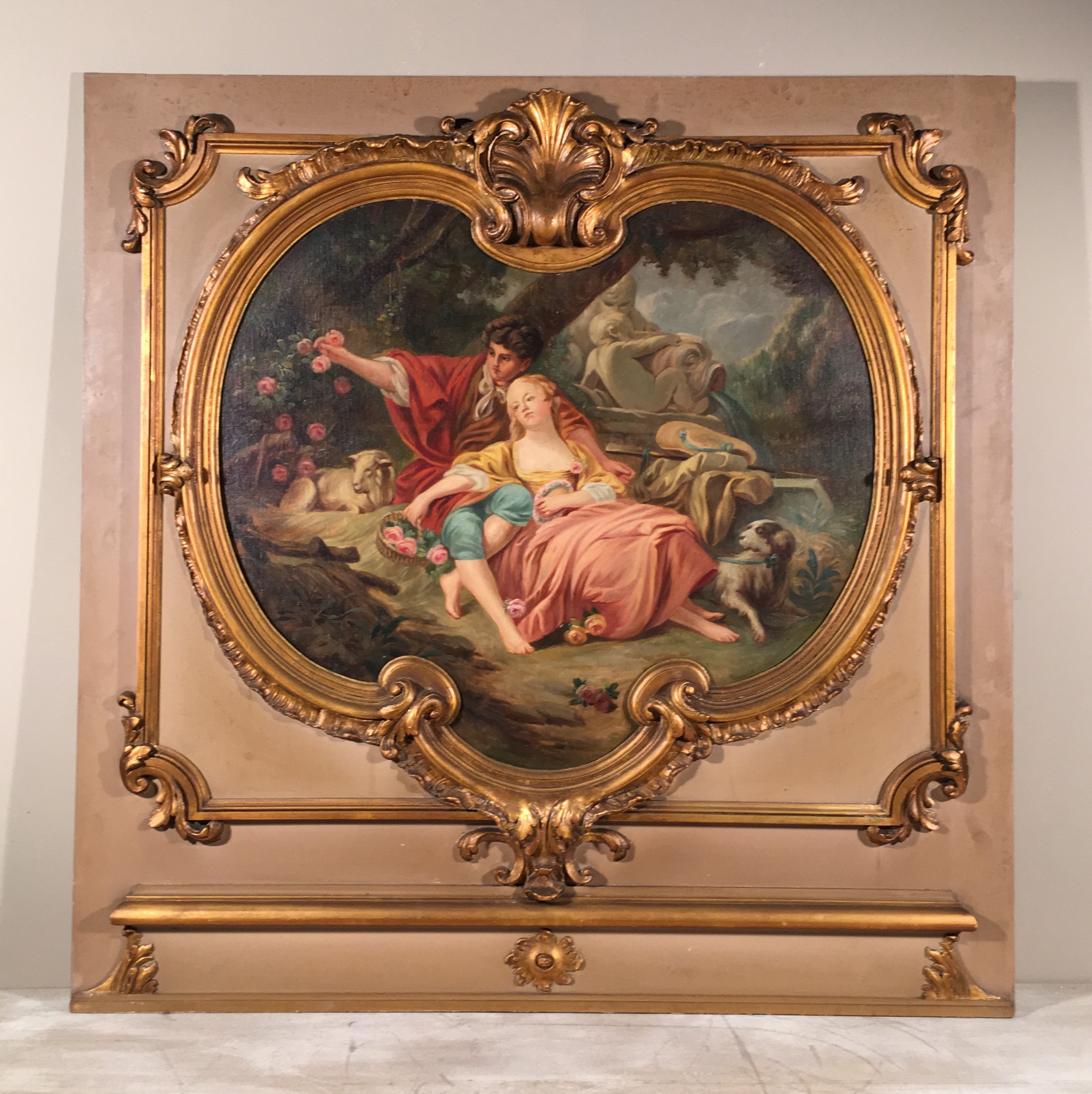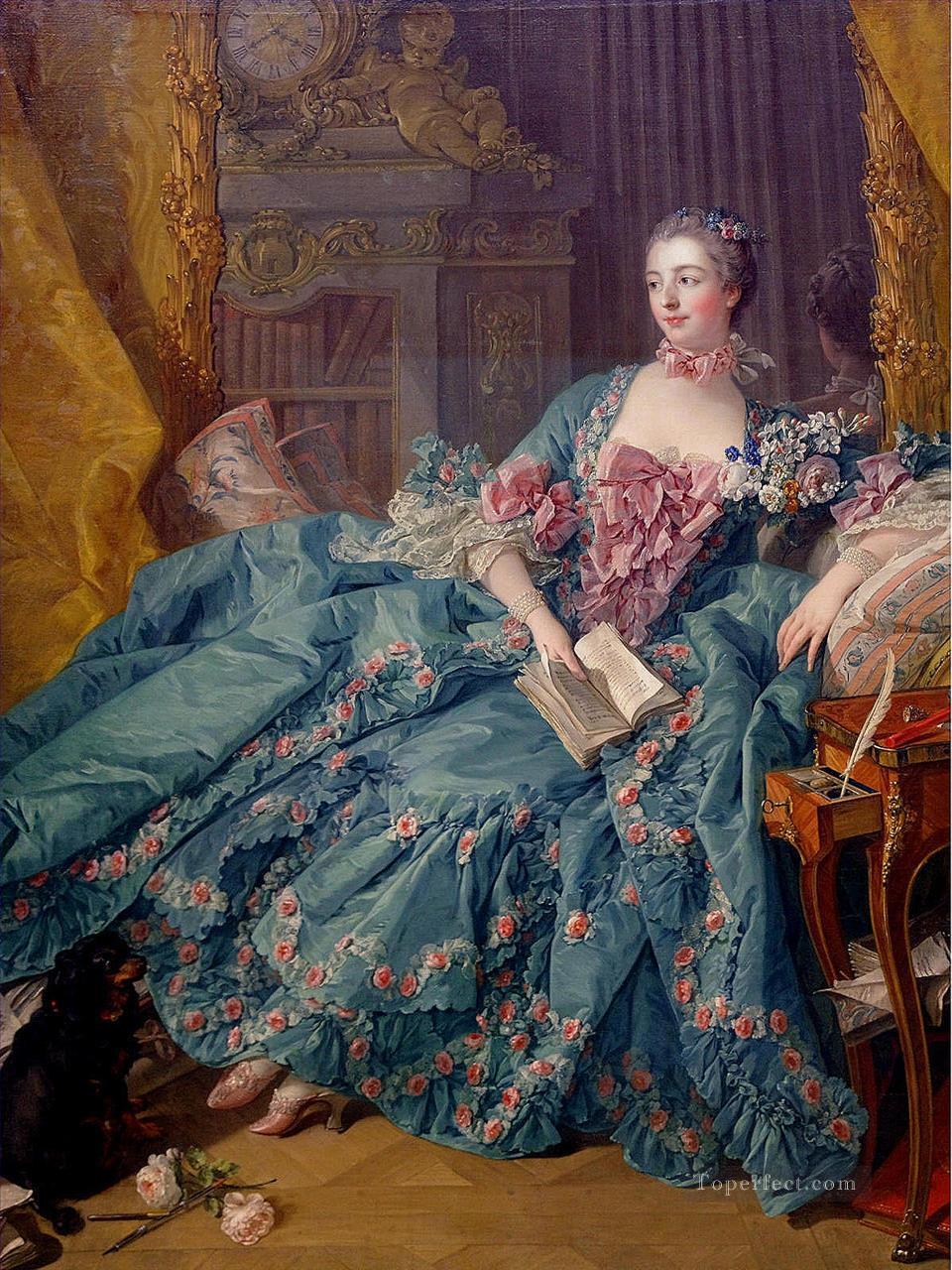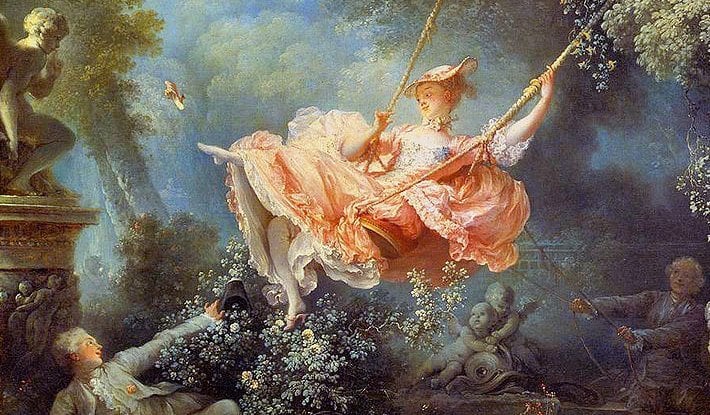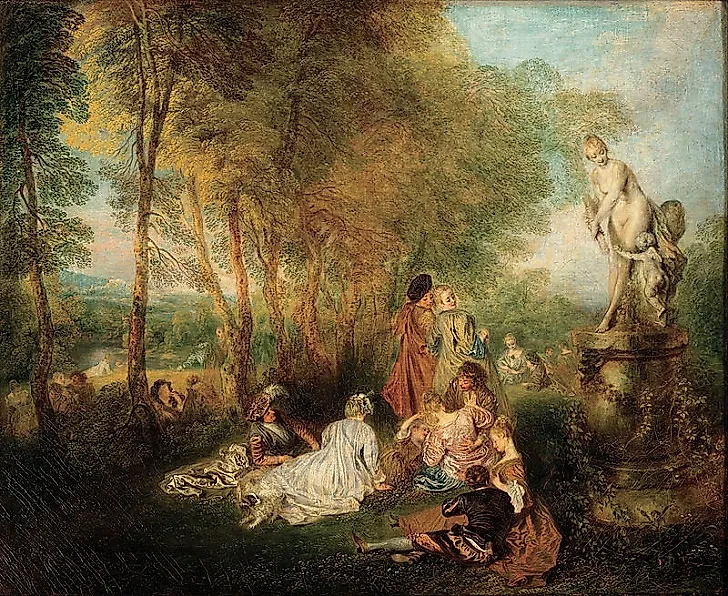Rococo Painting. Jean-Antoine Watteau is credited with adopting Rococo style in painting. Two lovers have conspired to get an older fellow to push the young lady in the swing while her lover hides in the bushes.

Often, Rococo paintings were based around themes of love, playfulness, and nature. He painted the playful lives of the aristocratic youths. French Rococo painting, in general, was characterized by easygoing, lighthearted treatments of mythological and courtship themes, rich and delicate brushwork, a relatively light tonal key, and sensuous coloring.
Rococo paintings showcase an exquisite attention to detail. The artist became a master of rendering fabrics, such as velvet and silk, stone, and the time-favored rose. Rococo Paintings Paintings in the Rococo tradition lend Parisian flair and graceful whimsy to any space.
Rococo art can be defined as highly ornate and. penchant for decorating artificial grottos with shells and stones, Rococo began as an interior design style favored by the urban upper class. Later movements would look back on it as being opulent in its own right. Rococo painting in France began with the graceful, gently melancholic paintings of Antoine Watteau, culminated in the playful and sensuous nudes of François Boucher, and ended with the freely painted genre scenes of Jean-Honoré Fragonard.
The artist became a master of rendering fabrics, such as velvet and silk, stone, and the time-favored rose.
Rococo artists used loose brush strokes, pastel colors, and flowing lines and forms in their compositions, regardless of a painting's subject matter.
He lived during the latter end of the movement and created paintings that were known for their Hedonistic nature. The popular Rococo themes are another example of how Rococo design rejected the traditions of the Baroque style. Rococo art is a style of painting from early eighteenth-century France that featured lighthearted scenes and soft colors.
Rococo art can be defined as highly ornate and. penchant for decorating artificial grottos with shells and stones, Rococo began as an interior design style favored by the urban upper class. Often, Rococo paintings were based around themes of love, playfulness, and nature. Inspired by Renaissance artists, French painter François Boucher is renowned for his interest in emphasizing the intricacies of a scene.
Jean-Honoré Fragonard's works were almost like the benchmark for the French Rococo art movement. Fragonard's The Happy Accidents of the Swing Famous Painting T-Shirt. He focused on frivolity and the fleeting nature of beauty.
His detail-oriented approach to painting materializes as impossibly ornate costumes and "elaborately decorative" skies ( The Getty Museum ). Rococo paintings showcase an exquisite attention to detail. French Rococo painting, in general, was characterized by easygoing, lighthearted treatments of mythological and courtship themes, rich and delicate brushwork, a relatively light tonal key, and sensuous coloring.
Jean-Honoré Fragonard's works were almost like the benchmark for the French Rococo art movement. Classical myths were also popular themes among Rococo artists. Further information on the Rococo can be.
Rococo Paintings Paintings in the Rococo tradition lend Parisian flair and graceful whimsy to any space.
The predominant themes, always highlighted by the opulence of aristocratic society, dealt with love , mythology, landscapes, and social gatherings.
He focused on frivolity and the fleeting nature of beauty. Classical myths were also popular themes among Rococo artists. Rococo portraiture had its finest practitioners in Jean-Marc Nattier and Jean-Baptiste Perroneau.
Further information on the Rococo can be. French Rococo painting, in general, was characterized by easygoing, lighthearted treatments of mythological and courtship themes, rich and delicate brushwork, a relatively light tonal key, and sensuous coloring. The Rococo movement was defined by its use of natural motifs, curving lines, soft colors, and themes regarding nature, playfulness, lighthearted amusement, youth, and love.
Rococo painting in France began with the graceful, gently melancholic paintings of Antoine Watteau, culminated in the playful and sensuous nudes of François Boucher, and ended with the freely painted genre scenes of Jean-Honoré Fragonard. Rococo sculpture was notable for its intimate scale, its naturalism, and its varied surface effects. The Rococo movement was defined by its use of natural motifs, curving lines, soft colors, and themes regarding nature, playfulness, lighthearted amusement, youth, and love.
Fragonard's The Happy Accidents of the Swing Famous Painting T-Shirt. Classical myths were also popular themes among Rococo artists. The Embarkation for Cythera - Jean-Antoine Watteau Few Rococo artists are more well-known from the movement than Jean-Antoine Watteau.
Many great artworks were made during this time and one of the most buoyant centers was Venice. Their idea is that—as she goes up in the swing, she can part her legs, and her lover can get a tantalizing view up her skirt. Often, Rococo paintings were based around themes of love, playfulness, and nature.
Watteau himself introduced brilliant colors and dynamic scenes depicting love and nature.
He lived during the latter end of the movement and created paintings that were known for their Hedonistic nature.
The pungency of the wit, the dynamism, and freshness were advantages of Venetian painters.. Rococo art can be defined as highly ornate and. penchant for decorating artificial grottos with shells and stones, Rococo began as an interior design style favored by the urban upper class. Later movements would look back on it as being opulent in its own right.
Rococo painting in France began with the graceful, gently melancholic paintings of Antoine Watteau, culminated in the playful and sensuous nudes of François Boucher, and ended with the freely painted genre scenes of Jean-Honoré Fragonard. He focused on frivolity and the fleeting nature of beauty. Characterized by elegance, levity, floral motifs, muted colors, and curving, asymmetrical lines, Rococo soon extended to painting, where its aesthetics combined with themes of sensual love and nature.
He focused on frivolity and the fleeting nature of beauty. Jean-Antoine Watteau is credited with adopting Rococo style in painting. Rococo Art Guide: History and Notable Works of Rococo Art.
Characterized by elegance, levity, floral motifs, muted colors, and curving, asymmetrical lines, Rococo soon extended to painting, where its aesthetics combined with themes of sensual love and nature.
Further information on the Rococo can be.
Jean-Antoine Watteau is credited with adopting Rococo style in painting. The pungency of the wit, the dynamism, and freshness were advantages of Venetian painters.. Jean-Honoré Fragonard's works were almost like the benchmark for the French Rococo art movement.
Later movements would look back on it as being opulent in its own right. Rococo art is a style of painting from early eighteenth-century France that featured lighthearted scenes and soft colors. Jean-Antoine Watteau is credited with adopting Rococo style in painting.
Rococo art can be defined as highly ornate and. penchant for decorating artificial grottos with shells and stones, Rococo began as an interior design style favored by the urban upper class. French Rococo painting, in general, was characterized by easygoing, lighthearted treatments of mythological and courtship themes, rich and delicate brushwork, a relatively light tonal key, and sensuous coloring. The Rococo movement was defined by its use of natural motifs, curving lines, soft colors, and themes regarding nature, playfulness, lighthearted amusement, youth, and love.
The pungency of the wit, the dynamism, and freshness were advantages of Venetian painters.. Inspired by Renaissance artists, French painter François Boucher is renowned for his interest in emphasizing the intricacies of a scene. Classical myths were also popular themes among Rococo artists.
















.jpg)

